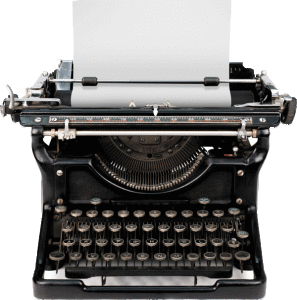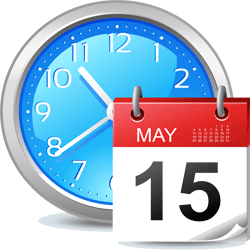 Do you have a great idea for a non-fiction book?
Are you vexed by what a book proposal looks like?
Do you have a great idea for a non-fiction book?
Are you vexed by what a book proposal looks like?
This summer I stood in your shoes.
After discussing how I wanted to revise my dissertation into a book manuscript, a potential publisher encouraged me to write a book proposal.
The publisher provided me with a list of information that I should include in my proposal, but their outline left me perplexed as to what each section should look like.
Frustrated, I hired writing coach Michelle Seaton to help me craft my book proposal.
In this post you will learn what a book proposal is, what sections you should include, and tips that will help you strategically plan each section.
What Is A Book Proposal?
A book proposal is part action plan for how you will write (or wrote) your book and part marketing document.
A book proposal should describe your book in succinct detail and excite a publisher/peer-review committee.
The 10 Steps of a Non-Fiction Book Proposal
- Rationale
- Why Press?
- Description
- Annotated Table of Contents
- Sources
- Readership
- Comparable and Competing Works
- Specifications
- Schedule
- Author Bio
Before You Begin: Title Your Work
Potential publishers want to know what they are reading, so give your book a good working title.
Tip: Write your working title at the top of the first page and use CAPS anytime your write the title of your book. This will draw editors' tired eyes to your book and help them as they skim your proposal.
 How to Write a Book Proposal: What Goes into Each Section?
How to Write a Book Proposal: What Goes into Each Section?
1. Rationale
In 2 paragraphs state why your book should be published.
Briefly explain: Why is your argument important? What is novel about your approach or methodology? How does your work add to the existing scholarship? Who is the audience for your book?
2. Why Press?
Answer the question: "Why should [insert name of press] publish this book?"
Tell the editor why your book is a perfect match for their press.
Tip 1: Do your homework. Google the presses you are submitting to and create a list of the titles they have published that are comparable to yours. Mention these titles as you explain why your book is a great fit for their press.
Tip 2: Explain why you want to publish with [insert name of press]. Show the editor that you are excited about their press and want to publish with them.
3. Description
Write an overview of your book. Describe your themes, concepts, and how you will develop your narrative.
Tip: Divide this section into topical paragraphs.
Your first paragraph should address the importance of your topic; describe your topic and why you chose to write a book about it.
Your second paragraph should explain your "take" on the importance of your topic; what is your angle/argument?
Your subsequent paragraphs should describe each of the themes/concepts you will address in the book.
End the section with a summary paragraph that ties in the importance of your work with the themes/concepts you described.
4. Annotated Table of Contents
Break your book into parts.
List each section of your book (Intro, Chapter 1, Chapter 2, and so on).
Under each section heading, replace "Chapter X" with your chapter title and describe the narrative you will tell in that chapter.
Tip 1: Describe your chapters in a way that highlights the narrative tension or drama of your story.
Tip 2: Be sure your descriptions reflect how each chapter will smoothly transition to the next.
Tip 3: If your chapters rely on illustrations, explain how you will feature them and how the illustrations will add to your work.

5. Sources
Name the archives you used to gather your research and provide an overview of the collections where you found most of your material.
Tip: Think of this segment as a "highlights" section, not a bibliography.
6. Readership
Answer the question: "Who will read your work?"
Tip: Do your research and be specific. If you mention "scholars" specify the kinds of scholars who will find your book interesting.
If you mention "university professors," specify the types courses they would use your book in and, if possible, an estimate of how many students enroll in those courses.
7. Comparable and Competing Works
Describe published books that might compete with your book and how your book differs from those works.
Show editors that you know about the marketplace for your book.
Tip 1: Be strategic. There may be 30 books similar to yours; describe only those books that are most closely related to your work.
Tip 2: After you narrow your list of comparable works, search each title on Amazon.com. Scroll down to the publication information and look at the their sales ranking. Use this information as you further narrow down your choices to 6-10 books.
Tip 3: Search Google for each title on your list. See if the author was nominated for or won any awards for the work you selected. If they did, mention that award; awards highlight that you have an "award-winning" topic
Tip 4: Respect the editor. Keep your descriptions brief by mentioning the title and author of a competing work, whether they won an award for it, the point they argued, (if essential) how they argued their point, and (briefly) how your book will add or differ from said competing work.
 8. Specifications
8. Specifications
State the length of your manuscript with a word count. How many words in the body text? How many words in the notes?
Tell the editor how many illustrations you will use and describe them by type, i.e. 10 maps, 3 charts, and 4 photographs.
Tip: Illustrations cost money so limit them if possible. Mention any information you have on copyright holders.
9. Schedule
Tell the editor when your manuscript will be ready for scholarly review.
State whether you need to revise or write sections and when you plan to finish your revisions/writing.
10. Author Bio
Why you? In 1-2 paragraphs summarize why you are qualified to write the proposed book.
Conclusion/Disclaimer
Writing my book proposal proved to be a difficult task for 2 reasons.
First, authors keep their proposals close. Many fear that someone might steal their intellectual property or that a publisher might decline their manuscript because they made their proposal available to the public.
Second, book proposals require a lot of thought. I had to figure out how to articulate why my study of Albany, New York matters and why people outside of the historical profession would want to read a book about it. I also had to consider how I would revise and extend my dissertation. Articulating all of this information was much harder than I thought it would be.
This post contains the information I learned while writing my book proposal. I hope that you find it useful and that it eases your work.
 What Do You Think?
What Do You Think?
What did you (do you) find most difficult about writing your book proposal? Share your story, tips, tricks, and questions by posting a comment.
